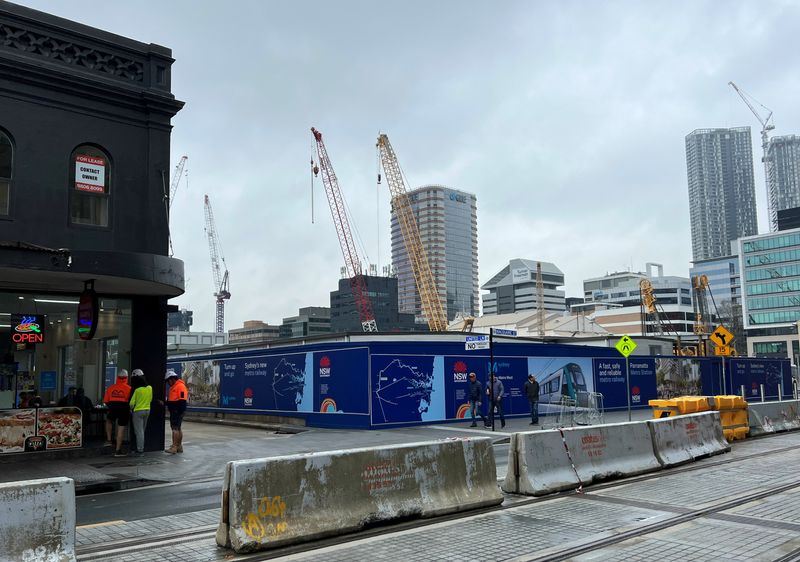
©Reuters. A general view of a construction site where many high-rise apartment buildings have been built in recent years, in Parramatta, Sydney, August 14, 2023. REUTERS/Stella Qiu/file photo
SYDNEY (Reuters) – Australia’s current account surplus rose sharply in the December quarter thanks to a surge in iron ore and coal exports, a much-needed boost to the economy that reduces the risk of recession.
Other data from the Australian Bureau of Statistics on Tuesday showed government spending also rose in the quarter, helping to offset the sharp slowdown in inventories.
ABS data on Tuesday showed the current account surplus rose to A$11.8 billion ($7.68 billion) in the fourth quarter, from an upwardly revised A$1.3 billion in the previous quarter . This compared to forecasts of a surplus of A$5.6 billion.
The ABS said net exports – driven by rising export prices and increased shipments of mining commodities – would add 0.6 percentage points to gross domestic product (GDP) in the fourth quarter, when analysts they had thought they would add only 0.2 percentage points.
Government spending also increased 0.4% in the quarter, adding 0.1 percentage points to GDP. The spending helped offset a sharp decline in mining inventories in the quarter, which appeared to have shaved 1 percentage point off growth.
“Coupled with solid capex data and a modest boost from government demand, GDP growth should be positive, if not spectacular in tomorrow’s print,” said Sean Langcake, head of macroeconomic forecasting for Oxford Economics Australia.
Fourth quarter GDP data will arrive on Wednesday. The median forecast called for a below-average increase of 0.3%, which would see annual growth slow to 1.4%.
The economic slowdown is one of the main reasons why the Reserve Bank of Australia (RBA) kept interest rates stable at 4.35% in February, after raising them by 425 basis points from May 2022 to tame inflation .
Markets are confident that the tightening is over, but futures prices suggest that any rate easing will not come until September.